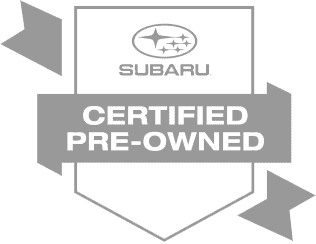
Will you be going on your first off-road outing this summer? If so, there are some basic tips you should follow to ensure that you and your SUV stay safe. Stick to these guidelines and avoid getting stuck in the mud or sand.
*BEFORE ATTEMPTING OFF-ROAD EXPEDITIONS, MAKE SURE YOUR SUBARU IS PROPERLY EQUIPPED TO DRIVE ON CERTAIN TERRAIN AND IN GOOD MECHANICAL ORDER.
Terrain: Dry Desert, Gravel
This is the simplest terrain to start on for novice off-roaders. Basic tips like driving slowly, making only small, incremental steering corrections, keeping your thumbs outside the steering wheel and placing your hands at 9 and 3 o’clock on the steering wheel are advised. Why place your thumbs outside of the steering wheel rather than tucked around and under? This is something that’s recommended by off-road driving instructors. Basically, you don’t want your thumb to accidently get caught in the steering wheel spokes if you hit a bump, which could equal a broken thumb.
Difficulty: Beginner
Terrain: Sand, Dunes
If you’ll be taking a trip to the coast or another area with sand, you’ll first need to make sure it’s legal for you to drive in the sandy areas. Most locations have signs stating if the area is accessible to 4x4s (aka four-wheel-drive vehicles). When driving on sand, make sure to keep up your momentum (but don’t drive fast - about 15-25 mph is adequate). Maintaining a steady speed is necessary, because if you slow down or stop your tires could dig into the sand. If you feel your tires sinking in while you’re driving, carefully move the steering wheel right to left several times so that your tires can gain traction again. Do not maneuver too quickly, however, or your vehicle could dig in the sand further - or worse - it could roll. It’s also highly recommended that drivers deflate their tires by 15-20 psi before driving on sand, which will make it easier to acquire traction. Re-inflate tires when returning to regular roads.
Difficulty: Intermediate
Terrain: Mud, Water 6 inches or less
First things first, make sure you’ve got your mud or all-terrain tires on. Next, keep in mind that many of the guidelines for driving in sand apply here. Momentum is key - which simply means to maintain a steady speed, not to drive fast - so again try not to slow down or come to complete stops until you’ve reached a dryer area. Avoid flooring it if you feel the tires sinking in the ground, which will likely only dig them further in the mud. Instead, move the steering wheel from left to right (again, avoid sharp or fast maneuvers). If you do get stuck, attempt to go in reverse, then back into drive while moving at a very low speed. Deflating tires is also advised for those driving on muddy terrain. If traveling downhill, switch to a lower gear or simply drive slower. If you slide, take your foot off the gas and gently turn the steering wheel in the direction of the skid and gently apply brakes until you’ve got control again. Check how deep mud patches are before entering to verify that they’re not too deep for your vehicle.
Difficulty: Intermediate
When properly equipped, many Subaru models provide excellent off-road capability. However, for anything beyond what we’ve mentioned above, like rock crawling or river runs, we strongly recommend training from a qualified off-road driving instructor. Even if your vehicle is properly equipped, driving in tough off-road situations can be dangerous without the proper knowledge.
Handy Tools for Off-Roading
- Air compressor
- Tire gauge
- Spare tire
- Mud or all-terrain tires
- Spare fuel and jugs of water
- Shovel
- High lift jack
- Recovery strap
- Planks of wood
- Fire extinguisher
- First aid kit





